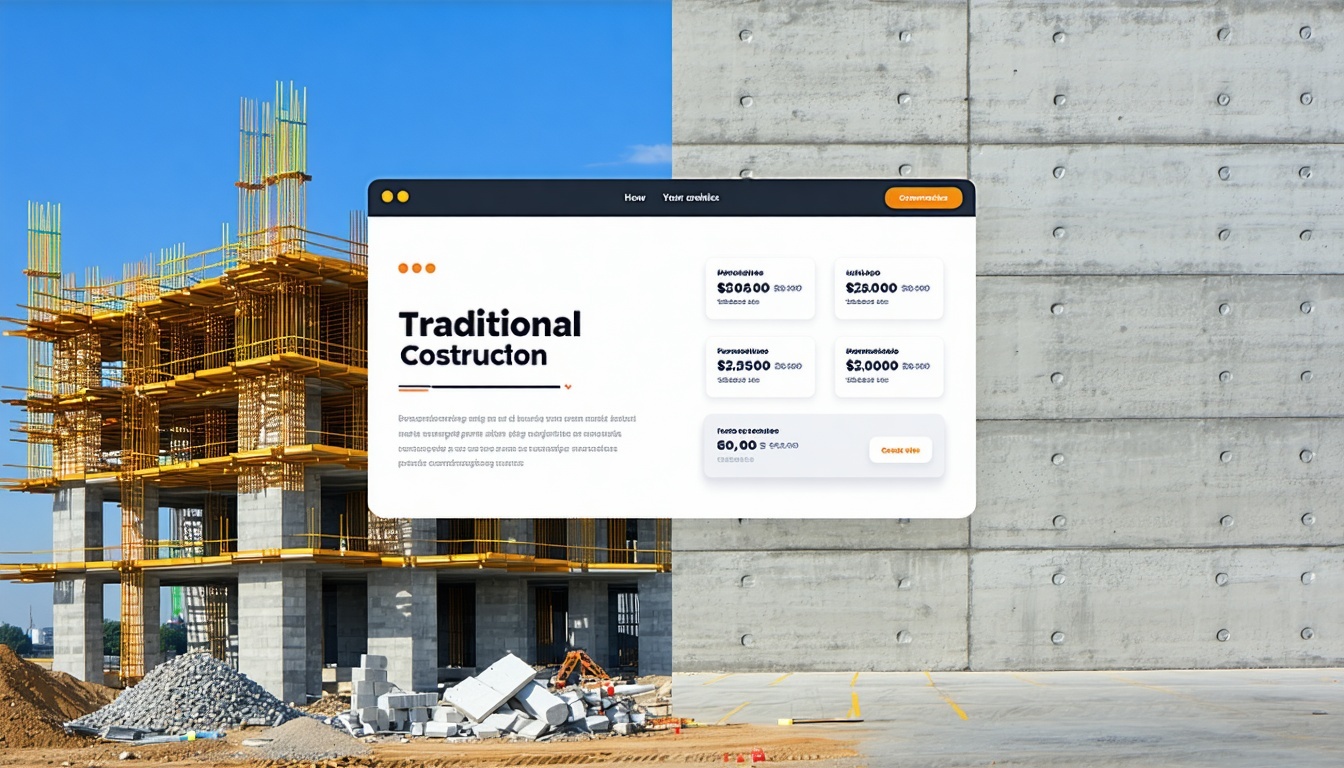The Future of Web Design: Modern Approaches for Success

In the fast-paced world of construction, having a cutting-edge website is no longer optional — it's a necessity.
Outdated Web Design Practices: Why They No Longer Work for Construction Companies
Traditional web design practices often involve lengthy development timelines, high costs, and inflexible structures that can quickly become obsolete. For construction companies, these outdated methods can significantly hinder their online presence and customer engagement. As the industry evolves, a website that is slow, difficult to navigate, or visually unappealing can drive potential clients away and damage the company's reputation.
Moreover, older design practices tend to lack the agility needed to integrate new technologies and functionalities seamlessly. This rigidity results in a lack of responsiveness and adaptability, making it challenging for construction companies to keep up with the fast-paced digital landscape. To remain competitive, it's crucial to adopt modern web design trends that prioritize efficiency, user experience, and scalability.
Next-Generation Design Systems: Enhancing Speed, Performance, and Flexibility
Next-generation design systems are transforming the way construction companies build and maintain their websites. These systems leverage modular and scalable components that can be easily customized and updated, ensuring that the website remains current and functional. By using a combination of no-code platforms, AI-powered design workflows, and integrated digital ecosystems, companies can drastically reduce development time and costs.
The key benefits of these advanced design systems include improved speed, performance, and flexibility. They enable construction companies to launch websites faster, update content more efficiently, and provide a seamless user experience across all devices. These systems also allow for easy integration with other digital tools and platforms, enhancing overall functionality and user engagement.
Responsive Design and Mobile-First Approaches: Meeting the Demands of Modern Users
In today's digital age, users expect websites to be mobile-friendly and responsive. For construction companies, this means having a website that looks and performs well on all devices, from desktops to smartphones. A mobile-first approach ensures that the website is designed with the mobile user in mind, providing a seamless and intuitive experience regardless of the device being used.
Responsive design is crucial for meeting the demands of modern users. It ensures that the website automatically adjusts its layout and content to fit different screen sizes and resolutions. This not only improves the user experience but also boosts search engine rankings, as search engines prioritize mobile-friendly websites. By adopting responsive design and mobile-first approaches, construction companies can attract and retain a wider audience, ultimately driving more conversions and business growth.
User Expectations: Streamlined, Visually Appealing, and Highly Functional Construction Websites
Today's users have high expectations when it comes to website design. They want sites that are not only visually appealing but also highly functional and easy to navigate. For construction companies, this means creating a streamlined and professional online presence that effectively showcases their projects, services, and expertise.
A well-designed website should feature intuitive navigation, clear calls to action, and engaging visual elements that capture the user's attention. It should also provide valuable content that addresses the needs and concerns of potential clients, such as detailed project portfolios, client testimonials, and informative blog posts. By meeting these user expectations, construction companies can build trust, enhance their reputation, and drive more business opportunities.
Success Stories: Construction Brands That Revolutionized Their Online Presence
Several construction companies have successfully transformed their online presence by adopting modern web design practices. These success stories serve as inspiring examples of how strategic redesigns can lead to significant business growth and improved customer engagement.
One such example is a mid-sized construction firm that leveraged next-generation design systems to overhaul its outdated website. By incorporating responsive design, AI-powered workflows, and integrated digital tools, the company was able to launch a sleek, user-friendly site in record time. This transformation not only enhanced the firm's online visibility but also resulted in a substantial increase in client inquiries and project bookings.
Another success story involves a construction company that embraced a mobile-first approach to meet the needs of its on-the-go clients. The redesigned website featured a clean and modern layout, optimized for mobile devices, and included interactive elements such as project galleries and live chat support. As a result, the company experienced a significant boost in user engagement and client satisfaction, positioning itself as a leader in the competitive construction industry.
